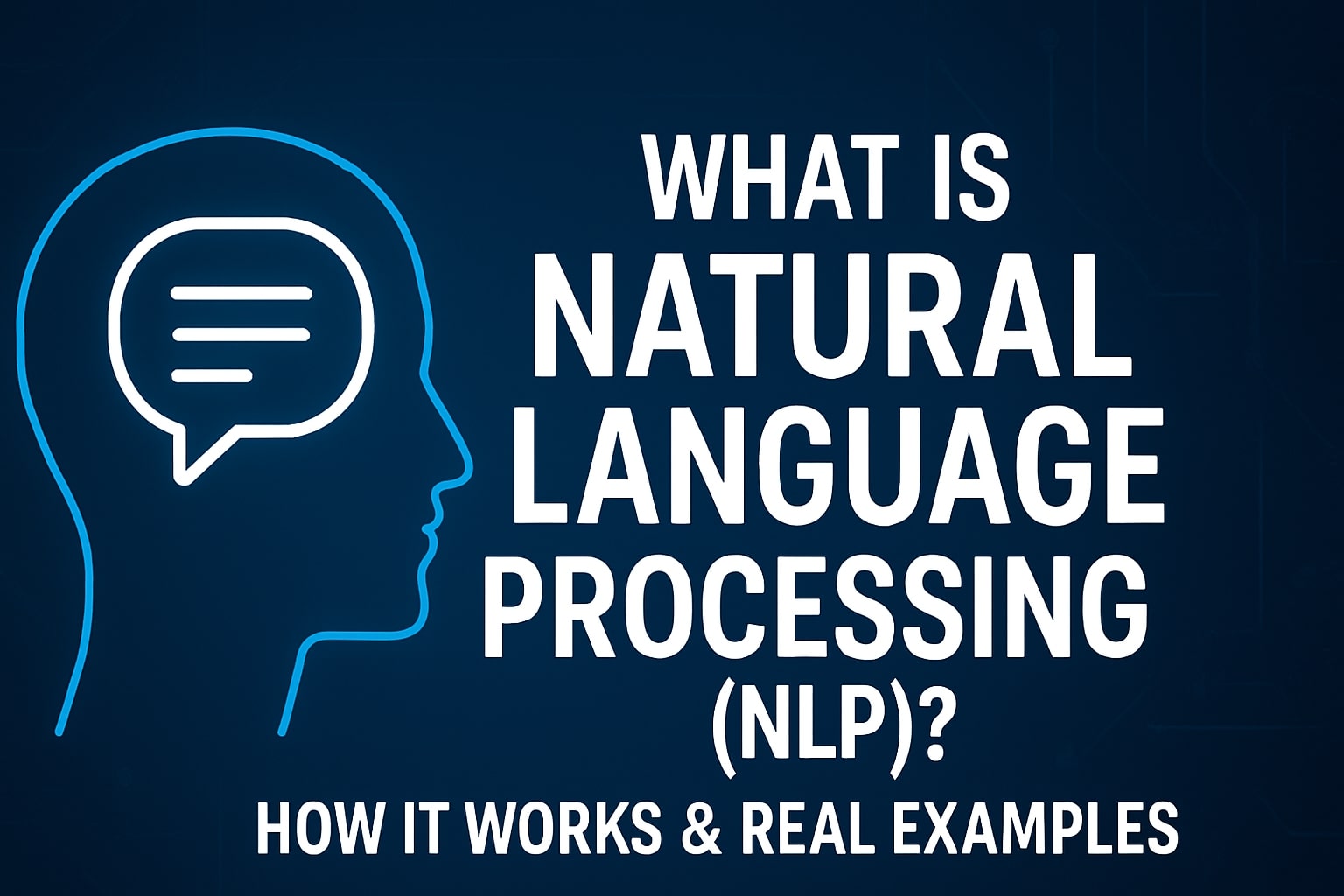Natural Language Processing (NLP) is the branch of AI that gives machines the ability to read, interpret, and derive meaning from human language. It’s what lets you talk to Siri, translate a sentence with Google, or have your email suggest a full phrase. In this guide, you’ll learn how NLP works and see real examples of it in action.

What is Natural Language Processing?
NLP is a field at the intersection of computer science, AI, and linguistics. Its purpose is to bridge the gap between human communication and machine understanding. Human language is messy—filled with ambiguity, slang, and even sarcasm—which makes this a complex challenge. You can explore more in Stanford’s overview of NLP.
How Does NLP Work?
Natural Language Processing works by breaking down and analyzing text or speech in steps. Traditional systems relied heavily on rules, while modern NLP combines those with machine learning and deep learning:
- 1. Tokenization: Splitting text into words, phrases, or tokens.
- 2. Part-of-Speech Tagging: Labeling words as nouns, verbs, adjectives, etc.
- 3. Lemmatization & Stemming: Reducing words to their base forms (e.g., “running” → “run”).
- 4. Stop Word Removal: Ignoring filler words like “is” or “the.”
- 5. Syntax Analysis: Understanding sentence structure and grammar.
- 6. Semantic Analysis & Named Entity Recognition: Extracting meaning and identifying real-world references like names, places, or companies.
Deep learning models such as transformers allow modern NLP systems to process context more effectively. Learn more about this evolution from IBM’s introduction to NLP.

Real-World Examples of Natural Language Processing
- Chatbots and Virtual Assistants: Alexa, Google Assistant, and customer service bots use NLP to understand requests.
- Machine Translation: Google Translate and DeepL translate across languages while preserving context.
- Sentiment Analysis: Businesses use NLP to gauge customer opinions on social media and reviews.
- Autocorrect and Grammar Checkers: Grammarly and Microsoft Editor correct mistakes using language AI.
- Search Engines: Google applies NLP to interpret your intent beyond just matching keywords.
The Future of NLP
With large language models (LLMs) like GPT-4, Natural Language Processing has reached new levels of sophistication. The future of NLP will include more conversational AI, deeper contextual understanding, and the ability to generate everything from summaries to creative stories. For real-world insights, see MIT Technology Review’s AI coverage.
See AI in action: NLP plays a central role in the journey from early AI to today’s tools like ChatGPT. Learn more in our article on the History of AI.
